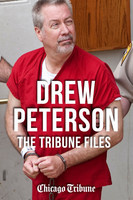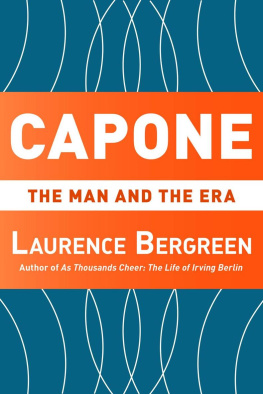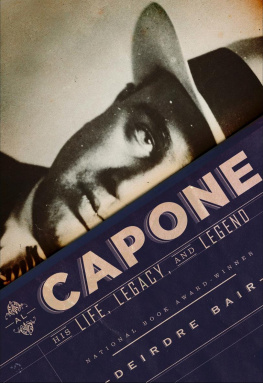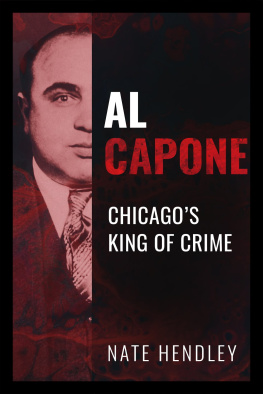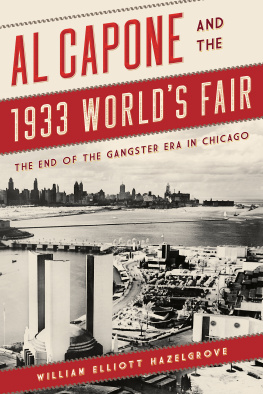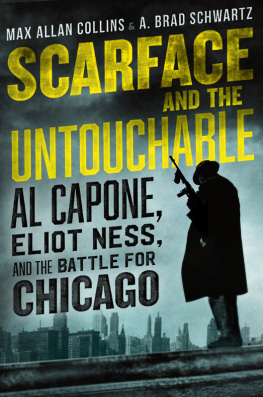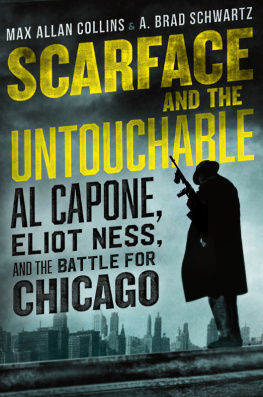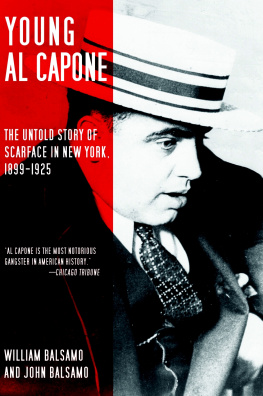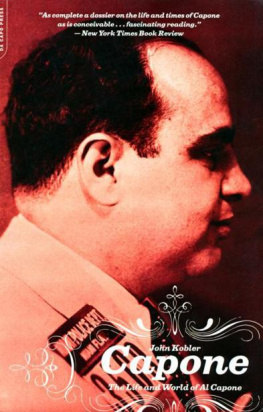The photographs in this book were digitized from glass negatives and original prints in the Chicago Tribunes archives. Many of these photos have never been published in any form. Throughout the book, regular text denotes original material taken from the Tribunes archives. Italic text denotes material created to connect the various source materials into a coherent whole.
Introduction
The images of Al Capone in this book were digitized from glass-plate negatives and original prints made from glass plates. These plates had been stored for decades in the deepest of basement storage rooms at the Tribune Tower, five levels below Michigan Avenue street level. Protected in paper envelopes, the plates were filed haphazardly. They were only recently located and brought up to the newsroom for scanning.
We had located buried treasure. Despite some degrading of the emulsion around the edges, most were in remarkably good shape. Because of the size of the plates, and the advancements in digital scanning, incredible detail can now be seen spats, hats and smirks.
A small number of prints in folders filed in our old fourth-floor library were also scanned. Few of those images had been published before, but only once, and stored away in the stacks. The original glass plates associated with those prints have not been found, but the prints were so interesting and high quality that we included them in this collection. During Capones lifetime, photographic techniques evolved from glass plates to 4-by-5 black-and-white film negatives. By the time Capone died in 1947, all of the photo coverage of his funeral was recorded on film.
The images were taken by photographers of the Chicago Tribune as well as the now-defunct Chicago Herald-Examiner and Chicago American. Those newspapers archives folded into the Tribune archives when they went out of business.
Try to comprehend the difficulty of making glass-plate negatives in that era. News events were especially challenging news photographers carried heavy Speed Graphic cameras that held 4-by-5-inch glass plates. Only one plate could be exposed at a time, so for every new photograph, another plate had to be loaded. Oftentimes the press photographers would shoot fewer than a dozen plates on assignment. Compare that with the hundreds of digital images typically taken by todays Chicago Tribune photojournalists on their daily assignments.
Some of these digitized glass-plate images have never been published. And when the unpublished plates were stored away at the Tower after being developed, perhaps only the photographer and certain editors had glanced at these outtakes. So its our pleasure to share these visual documents of a crime boss known around the world.
Robin Daughtridge
Associate Managing Editor / Photography and Video
Chicago Tribune
THE ROARING TWENTIES: Capones Chicago
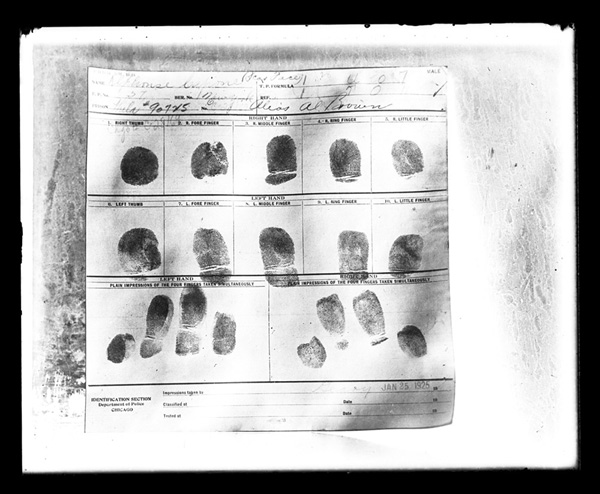
Al Capones fingerprints.
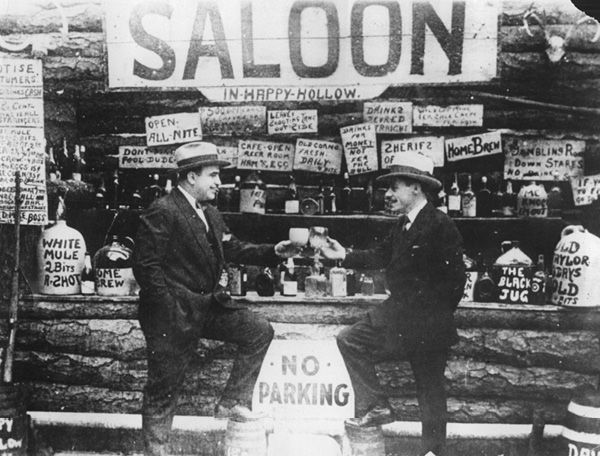
1926 : Ralph Sheldon (right) and Al Capone at a roadside bar in Tijuana, Mexico. Police discovered this photo in a raid on mob headquarters.
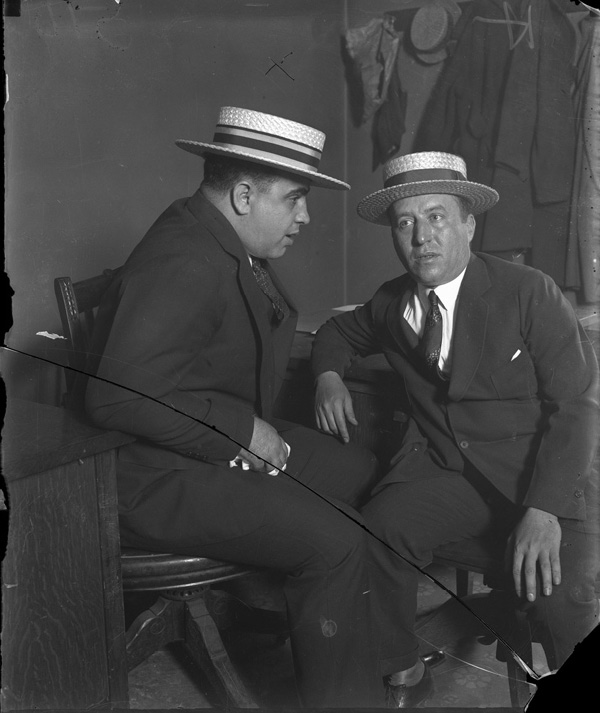
Aug. 10, 1926 : Capone and Attorney Benjamin Epstein.
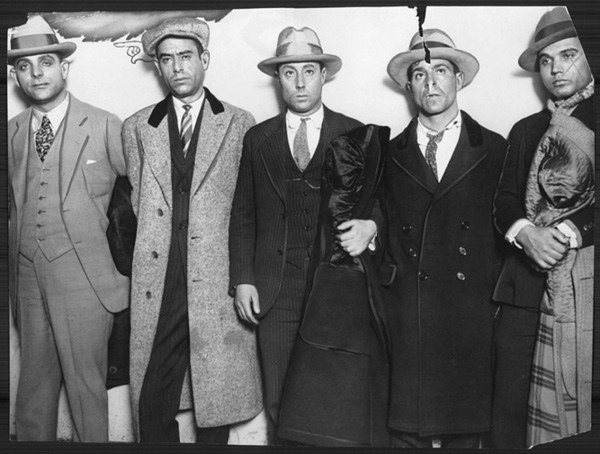
November 1927 : These men, all reputed enemies of Capone and Tony Lombardo, were held while Chicago police investigated a plot to kill members of a rival crime gang. From left are: Joseph Aiello, Joe Rubinelli, Michelo Bizirro, Jack Manzella, Joe Russo.
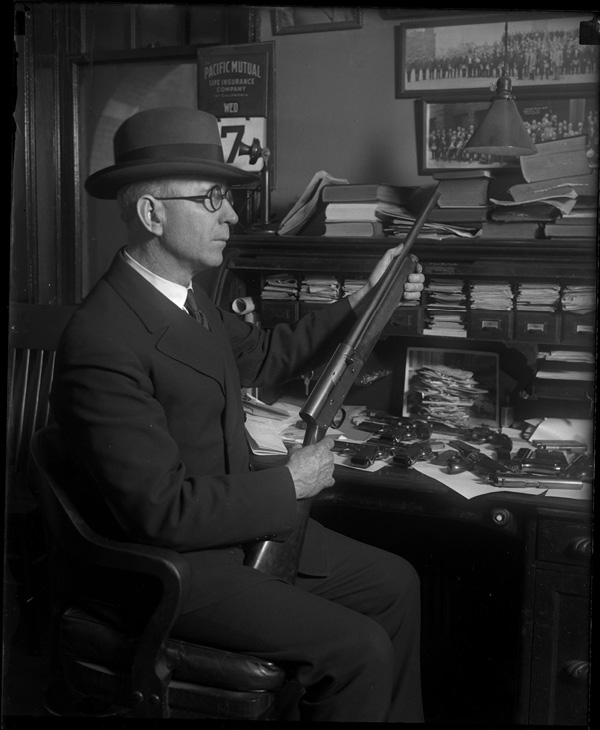
Dec. 30, 1927 : Joliet Police Chief John Corcoran and the guns he confiscated from Capone and his gang when they got off the train in Joliet.
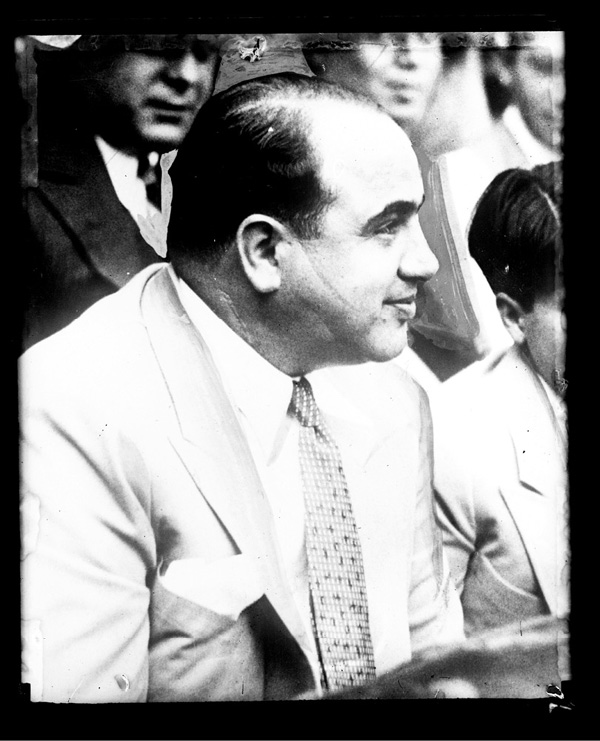
Al Scarface Capone.

Dec. 30, 1927 : Capone after being charged with gun-toting by Joliet police.
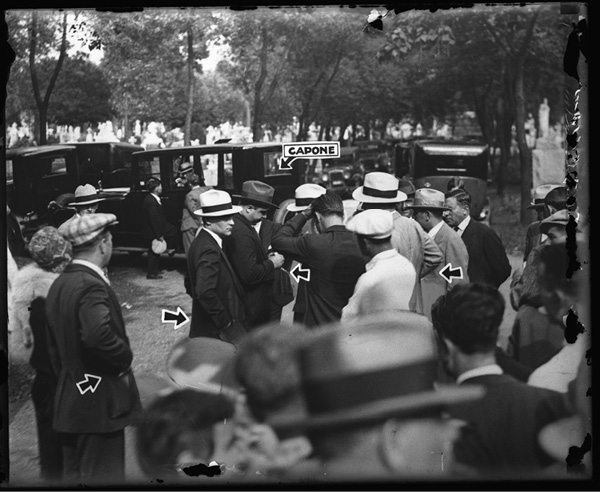
Sept. 13, 1928 : Capone in the crowd at Antonio The Scourge Lombardos funeral at Mount Carmel Cemetery in Hillside, a Chicago suburb. Lombardo, Capones adviser, was gunned down six days earlier at the intersection of Madison and Dearborn Streets in Chicago. (Purpose of arrows unknown.)
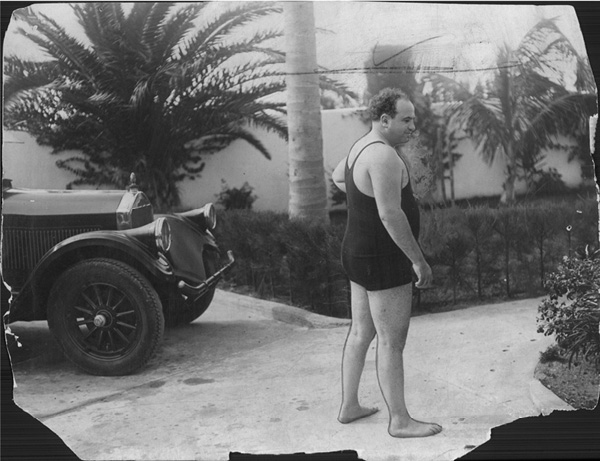
1929 : Capone in a bathing suit at his vacation home in Miami. Capones vacation retreat provided an alibi for his whereabouts during the St. Valentines Day Massacre in Chicago. This photo was retouched prior to publication. Because presses at that time couldnt reproduce photographic images well, retouching was used to add definition to edges in content. In most cases, it was done in order to more clearly see differences between similarly colored backgrounds (i.e., a white uniform against a sky, a suit against a dark wall). Thus, when it was printed in the newspaper, it would print with more clarity.
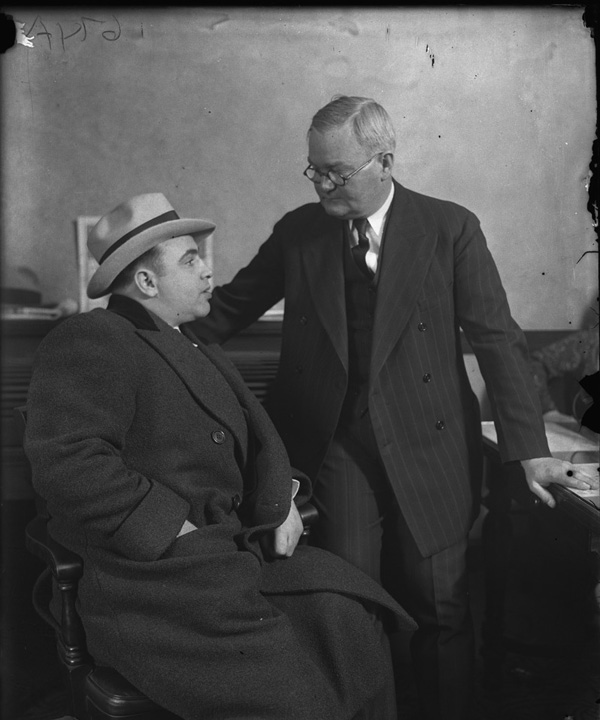
March 19, 1929 : Capone, left, and First Deputy Police Commissioner John Stege. This photo was taken a day before Capone began his testimony in front of a federal grand jury in relation to the St. Valentines Day Massacre. After a week of testimony, on March 27, 1929, Capone was arrested for contempt of court as he exited the courtroom.


